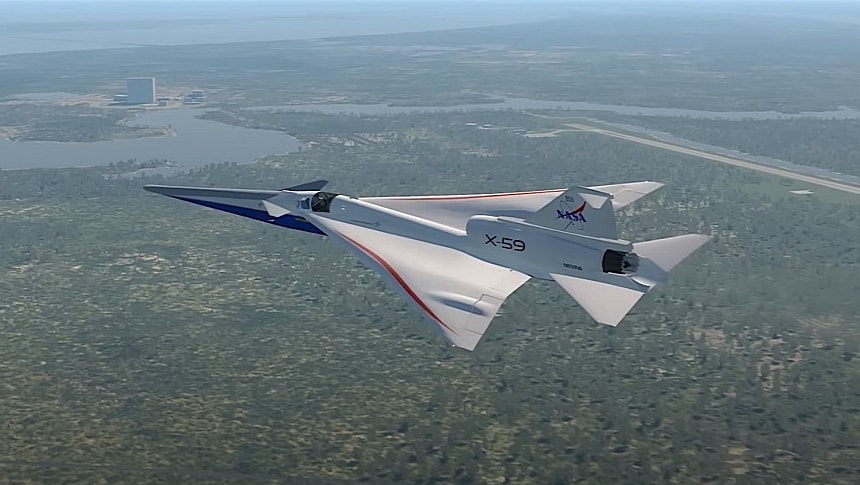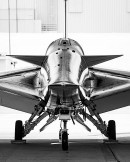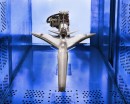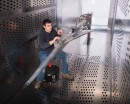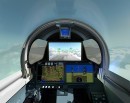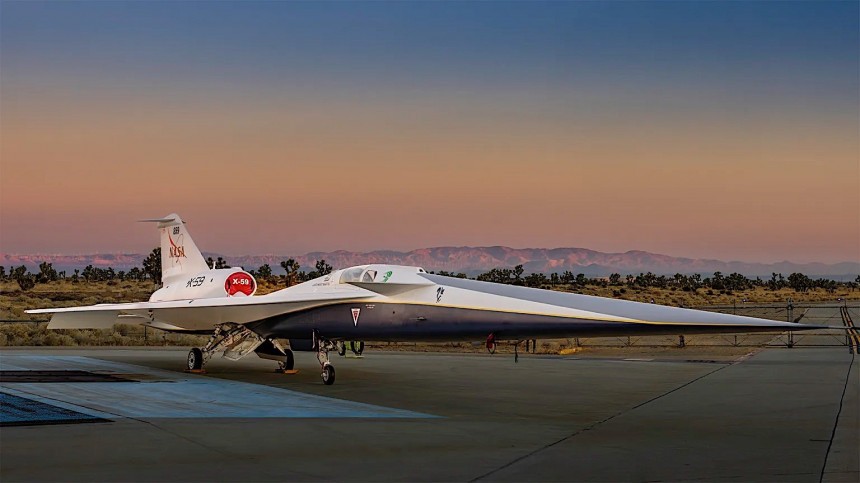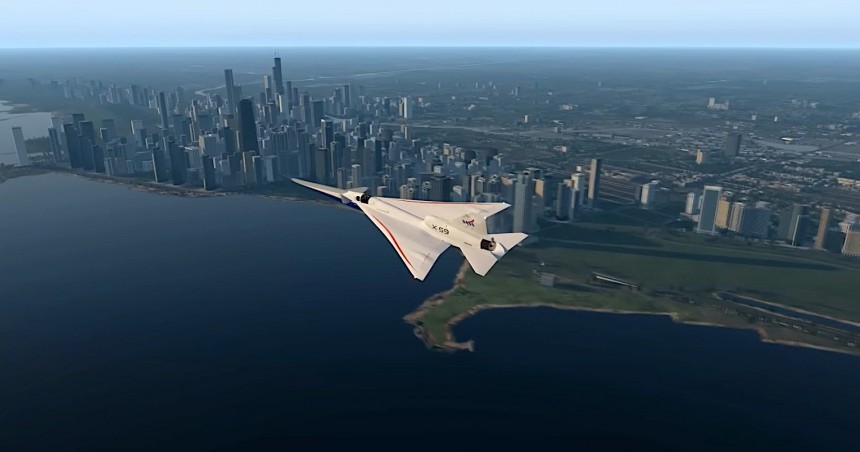The people and organizations working in space exploration are a very creative bunch. And by that I don't mean in a way relating directly to their activities, but when it comes to using acronyms for their work as well.
Time and again in the decades that space exploration has been a thing we've witnessed all sorts of such designations being used, some perfectly fitted, others simply dumb, and a select few clearly forced.
I'm not entirely sure where to include the following one, so to avoid any misunderstanding I'll simply call it wacky.
For a number of years now NASA and its partners, specifically Lockheed Martin's Skunk Works, have been working on a piece of technology not meant for use in outer space, but for bringing back civilian aerial supersonic travel in the atmosphere of our own planet.
The project is called Quiet Supersonic Technology (QueSST) and resulted at the start of 2024 in the unveiling of an experimental aircraft called X-59. The plane is a machine that will be flown in American skies very soon with a very purpose in mind: to prove that with special care and design, supersonic aircraft could be quiet enough to avoid disturbing civilian ears and breaking FAA regulations.
You see, a normal supersonic aircraft creates pressure waves during its flight that get squashed together as the plane pushes through them. Once that happens, a sonic boom is generated – noise that in the case of an F-16, for instance, goes as high as 78 dB at an altitude of over 8,000 meters (26,200 feet).
That's loud enough to be disturbing for people and it led to the banning of supersonic flight over land in 1973. That meant that not even the Concorde, humanity's single supersonic airliner, wasn't allowed to do that.
For flights at such high speeds to be effective planes would have to maintain it throughout the flight, a thing the X-59 is here to prove possible. The plane's special design is meant to lower the value of the sonic boom, bringing it down to the volume of a car door closing - 60 dB.
That's on paper, as in the real world NASA's sub-project manager for the Quesst acoustic validation phase, Larry Cliatt, expects the plane to generate 75 perceived loudness decibels. That's higher than mentioned above, but still well below the 100 dB the Concorde produced.
NASA plans to begin flying the aircraft for testing later this year, and it will eventually take the X-59 over some American cities in a bid to determine how loud it feels for the residents. However, the space agency will not rely solely on the ears of the American public to get the needed data, and it will use specially-designed tech as well.
By that, I mean microphones spread on the ground on some of the planes' flight paths. And work on understanding what that means in terms of gear and manpower is already underway. And this is where the wacky name I mentioned at the beginning of this piece comes in.
To get a sense of what it needs to properly record the noise of the X-59 NASA has been using an F-15 and an F-18 from NASA Armstrong, flying over a 30-mile (48 km) stretch of desert near NASA's Armstrong Flight Research Center in Edwards, California.
The floor of the desert was dotted with no less than ten microphone stations in a bid to record the sounds created by the fighter jets moving at speeds of between Mach 1.15 to Mach 1.4, and at altitudes going from 40,000 to 53,000 feet (12 to 16 km).
In all 20 such flights were performed, and some of them even saw the F-18 flying inverted in a dive maneuver meant to replicate the quiet sonic boom NASA is expecting from the X-59.
The entire exercise is part of a program NASA calls the Carpet Determination In Entirety Measurements. In acronym form, that's CarpetDIEM, a very funny take on the Latin phrase "carpe diem" that loosely translates to "seize the day."
The CarpetDIEM program is technically over, as the space agency now has all it needs to determine exactly what it takes to record the sounds of the X-59 from the ground once it takes off.
Most importantly, though, the tests also validated how the Automatic Dependent Surveillance-Broadcast system the X-plane uses to report speed and position will trigger the microphones to start recording.
NASA says the microphones to be deployed on the yet undisclosed flight path of the X-59 have been made in such a way as to withstand extreme heat, cold, and the action of wildlife, including rodents, coyotes, and foxes.
The tools will be in use for up to nine months and an undisclosed number of flights. Once all the data is compiled, NASA plans to share its findings with regulators and industry players, in the hopes that one day we will once again be enjoying supersonic passenger flights.
I'm not entirely sure where to include the following one, so to avoid any misunderstanding I'll simply call it wacky.
For a number of years now NASA and its partners, specifically Lockheed Martin's Skunk Works, have been working on a piece of technology not meant for use in outer space, but for bringing back civilian aerial supersonic travel in the atmosphere of our own planet.
The project is called Quiet Supersonic Technology (QueSST) and resulted at the start of 2024 in the unveiling of an experimental aircraft called X-59. The plane is a machine that will be flown in American skies very soon with a very purpose in mind: to prove that with special care and design, supersonic aircraft could be quiet enough to avoid disturbing civilian ears and breaking FAA regulations.
You see, a normal supersonic aircraft creates pressure waves during its flight that get squashed together as the plane pushes through them. Once that happens, a sonic boom is generated – noise that in the case of an F-16, for instance, goes as high as 78 dB at an altitude of over 8,000 meters (26,200 feet).
That's loud enough to be disturbing for people and it led to the banning of supersonic flight over land in 1973. That meant that not even the Concorde, humanity's single supersonic airliner, wasn't allowed to do that.
That's on paper, as in the real world NASA's sub-project manager for the Quesst acoustic validation phase, Larry Cliatt, expects the plane to generate 75 perceived loudness decibels. That's higher than mentioned above, but still well below the 100 dB the Concorde produced.
NASA plans to begin flying the aircraft for testing later this year, and it will eventually take the X-59 over some American cities in a bid to determine how loud it feels for the residents. However, the space agency will not rely solely on the ears of the American public to get the needed data, and it will use specially-designed tech as well.
By that, I mean microphones spread on the ground on some of the planes' flight paths. And work on understanding what that means in terms of gear and manpower is already underway. And this is where the wacky name I mentioned at the beginning of this piece comes in.
To get a sense of what it needs to properly record the noise of the X-59 NASA has been using an F-15 and an F-18 from NASA Armstrong, flying over a 30-mile (48 km) stretch of desert near NASA's Armstrong Flight Research Center in Edwards, California.
The floor of the desert was dotted with no less than ten microphone stations in a bid to record the sounds created by the fighter jets moving at speeds of between Mach 1.15 to Mach 1.4, and at altitudes going from 40,000 to 53,000 feet (12 to 16 km).
The entire exercise is part of a program NASA calls the Carpet Determination In Entirety Measurements. In acronym form, that's CarpetDIEM, a very funny take on the Latin phrase "carpe diem" that loosely translates to "seize the day."
The CarpetDIEM program is technically over, as the space agency now has all it needs to determine exactly what it takes to record the sounds of the X-59 from the ground once it takes off.
Most importantly, though, the tests also validated how the Automatic Dependent Surveillance-Broadcast system the X-plane uses to report speed and position will trigger the microphones to start recording.
NASA says the microphones to be deployed on the yet undisclosed flight path of the X-59 have been made in such a way as to withstand extreme heat, cold, and the action of wildlife, including rodents, coyotes, and foxes.
The tools will be in use for up to nine months and an undisclosed number of flights. Once all the data is compiled, NASA plans to share its findings with regulators and industry players, in the hopes that one day we will once again be enjoying supersonic passenger flights.
